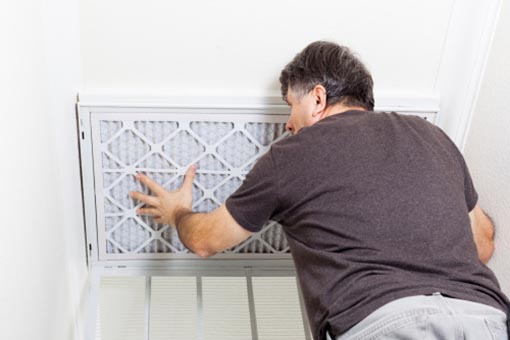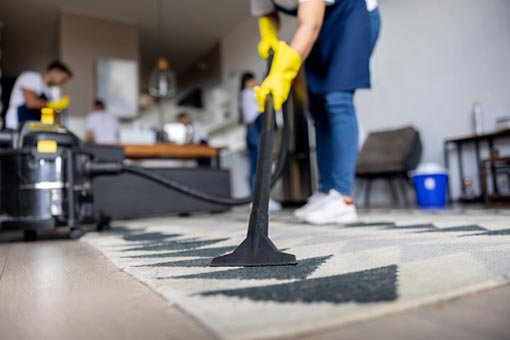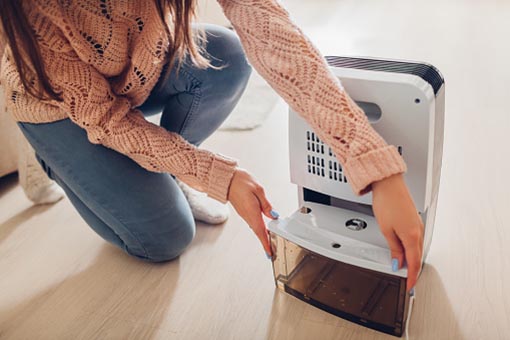HVAC Specialist Shares Top Indoor Air Quality Mistakes Homeowners Struggle With
Expert Reveals Indoor Air Quality Do’s and Don’ts
No matter the season, homeowners need to regularly tinker with their thermostat settings for year-round comfort. When the weather is mild during spring or fall, homeowners may choose to open their windows and use their HVAC system less. Meanwhile, summer and winter can often cause problems for indoor air quality (IAQ) since extreme temperatures also mean keeping the home closed off—to retain the air conditioning during summer and the heating in winter.
It’s easier to achieve good indoor air quality if you don’t make the same common mistakes that many homeowners commit. A1 Chesney Service Experts Chief Operating Officer Cary Reed discussed these mistakes and how you can avoid them.
Not Changing Air Filters Consistently Enough

Replacing your air filters minimizes the dust particles and airborne contaminants hiding in your home. For family members with allergies, failure to change air filters consistently could lead to sneezing, watery eyes or even result in trips to the doctor. To ensure you’re employing the right filter for your unique system and situation, become familiar with the Minimum Efficiency Reporting Value system, commonly shortened to MERV, Reed said.
“It’s a fairly straightforward 1 to 20 scale, and ratings in the middle of that range tend to be higher quality home filters,” Reed said. “And, if you struggle to stay on top of filter changes, I’d also advise a duct cleaning service too. After that, create a system to remind you when it’s time for air filter replacement”
Ignoring HVAC Maintenance
Overlooking routine HVAC maintenance is usually homeowners’ first step toward jeopardizing your indoor air quality, Reed added. An HVAC system annual checkup helps it functions effectively and helps to lower the risk of needing major repairs down the line. In addition to checking electrical connections and refrigerant levels, tune-ups offer cleaning coils and heating elements wherever air passes through before moving through the rest of your home. If a system isn’t running correctly, dust or moisture may accumulate and become the starting point for contaminants making it indoors.
Buying Products that Pollute the Air Unknowingly

Some homeowners may be surprised to find out that some everyday products could be endangering their health and air quality. Here are a few ways in particular that homeowners could be worsening their indoor air quality without noticing. The first is by using strong cleaners that emit fumes and substances known as volatile organic compounds (VOCs). If you can, choose an eco-friendly cleaner instead, Reed recommended.
“Candles are also a common air pollutant,” Reed said. “Even if you want a fresh smell in the home, this is it isn’t the best idea for air quality. I even warn homeowners against using many air fresheners.”
Another way people contaminate their home’s air quality unintentionally is with indoor plants that may lead to allergy symptoms. The Ogren Plant Allergy Scale (OPALS) is a simple 1 to 10 scale that is widely used to assess a plant’s potential for creating problems for allergy sufferers.
“There are many choices that are considered excellent indoor plants such as ferns, ivy, fig and yuccas, but they also are known to lead to more allergy symptoms. It’s a good idea to check online before picking indoor plants,” Reed said.
Neglecting Mold and Moisture Problems

Excessive humidity in a home can encourage mold and bacteria growth, which in turn may compromise indoor air quality. If you find a plumbing leak and water is collecting in the walls or another area of your home, address it as quickly as possible, Reed said. Dampness is often when the growth of mold starts, especially if you reside in a warmer part of the country.
If there is a musty smell in the air, that’s a sign moisture may be trapped and unable to evaporate. Some homes also encounter issues with either too much or too little moisture in the air, which may require evening out humidity levels with a humidifier or dehumidifier, Reed added.
Not Taking the Opportunity to Open Windows When Possible
While it may be tough to crack open the windows during a cold snap, there is still much of the year when opening windows and letting in fresh air is a good idea. Not only does it benefit in-home air quality as a whole, but it helps reduce radon levels. Radon is a radioactive gas naturally emitted from soil. In fact, installing a basic detector from a home improvement store is a prudent investment, since high radon exposure is linked to roughly 21,000 lung cancer deaths every year, according to the CDC.
To refresh indoor air even when it’s cold outside, take advantage of midday temperature highs to crack the windows in rooms and other spaces. In the summer, use the early morning hours when it’s cooler to refresh your home, Reed suggested.
Not Exploring Technology and Services that Can Help
Even if your home has “problem air” thanks to excess humidity levels, mold, bacteria and other airborne particles, there are many solutions available, outlined the HVAC pro.
One option includes installing germicidal UV light lamps, which are installed inside an HVAC system to eliminate bacteria, viruses and other microbes instantly. Other homeowners benefit most from ventilation systems that swap out musty air for fresh air, or whole-home air purifiers that can assure you enjoy a constant flow of fresh, clean air indoors.
“Your local indoor air quality specialists can also run tests to help you fully grasp the depth of the issue,” Reed said. “Similar to HVAC system maintenance, ignoring these problems only makes them more severe in the future. Fortunately, there are many ways to address air quality concerns.”
For details on how to reach peak indoor air quality, visit ServiceExperts.com/indoor-air-quality or request HVAC maintenance today.

